
Rice chemist Gustavo Scuseria wins 2024 Schrödinger Medal
Pioneering Rice chemist Gustavo Scuseria has won the 2024 Schrödinger Medal from the World Association of Theoretical and Computational Chemists.

Rice chemist Gustavo Scuseria wins 2024 Schrödinger Medal
Pioneering Rice chemist Gustavo Scuseria has won the 2024 Schrödinger Medal from the World Association of Theoretical and Computational Chemists.

Swedish delegation visits Rice campus with eye on space exploration
A delegation from Sweden visited Rice to forge new pathways for collaboration and growth in space education and research.

Rice researchers stride to unlock mysteries of human development
A research team from Rice University led by Aryeh Warmflash has made strides in understanding the processes that guide human embryonic development. The group’s findings were published in the scientific journal Cells Systems May 15.
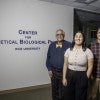
Rice study reveals insights into protein evolution
Rice University’s Peter Wolynes and his research team have unveiled a breakthrough in understanding how specific genetic sequences, known as pseudogenes, evolve. Their paper was published May 13 by the Proceedings of the National Academy of Sciences of the United States of America Journal.
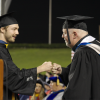
Tenneys enjoy special family moment at Rice commencement
David Tenney stood onstage at Rice Stadium Saturday, handing out diplomas to graduating students one by one. Rice’s undergraduate commencement ceremony is an event he knows well, having not only received his degree from Rice in 1987 but also having worked as the university’s registrar for two decades. But this time was different. A special moment he’d been waiting for was finally here: His son Jonathan Tenney was among the graduates.

Rice undergraduates win coveted Goldwater Scholarship
Rice University students Emma Codianne and Daniel Wang have won the Barry Goldwater Scholarship , an annual award that recognizes pioneering science, technology, engineering and mathematics (STEM) undergraduates in the United States.

Rice senior awarded Knight-Hennessy Scholarship to pursue graduate studies at Stanford University
Rice University senior Ryan Wang has been selected as a recipient of the Knight-Hennessy Scholarship, marking a significant milestone in his academic journey. The scholarship will enable him to pursue graduate studies at Stanford University, where he will probe deeper into bioengineering with a focus on neuroscience.

Researchers at Rice University have successfully synthesized a group of natural compounds known as fusicoccanes. The molecules, found in various living organisms, exhibit diverse biological activities, including the ability to modulate protein-protein interactions within biological systems.
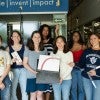
Heartbeat HERoes win Rice’s 2024 Engineering Design Showcase
Team Heartbeat HERoes claimed victory at Rice University’s Oshman Engineering Design Kitchen’s (OEDK) annual Huff OEDK Engineering Design Showcase last month. The team secured the 2024 Woods-Leazar Innovation Award along with a $5,000 cash prize for its project in medical engineering.

Rice University and the Houston Independent School District (HISD) will collaborate on a space and planetary science pilot program to inspire the next generation of Earth, planetary and space enthusiasts and professionals.
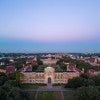
Rice hosts annual sustainability Carbon HUB conference
Rice University will host its 2024 Carbon Hub Annual Meeting May 6-7. The two-day event set to take place on campus promises a dynamic lineup of panel discussions, technical sessions, networking opportunities and roundtable meetings with experts from industry, academia and foundations.
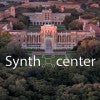
Rice, Baylor College of Medicine centers jointly award seed grants
Rice University’s Synthesis X Center (SynthX) and Baylor College of Medicine’s Dan L Duncan Comprehensive Cancer Center have jointly awarded their first innovation seed grants to three teams of research collaborators from Rice and Baylor.

Rice’s Yousif Shamoo elected AAAS fellow
Rice University bioscientist Yousif Shamoo has been elected a fellow of the American Association for the Advancement of Science (AAAS), the world’s largest general scientific society and publisher of the journal Science.

Rice cell biology student named Watson Fellow
When Trinity Eimer, a senior at Rice University, applied for the prestigious one-year postgraduate Thomas J. Watson Fellowship last September, she knew exactly what project to pitch to the evaluation committee. The cell biology and genetics major began her college career during the COVID-19 pandemic and wanted to spend her next 12 months studying the cross-cultural impact of grief caused by it.

Rice’s Alan Reid recognized by Scotland’s Royal Society of Edinburgh
Alan Reid, the Edgar Odell Lovett Professor of Mathematics and mathematics department chair at Rice University, has been elected to the Royal Society of Edinburgh (RSE), Scotland’s National Academy of Science and Letters. The prestigious accolade bestowed annually celebrates individuals who have achieved exceptional international standing in fields within the society’s domain.